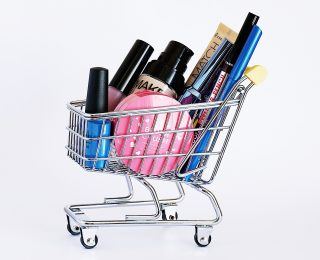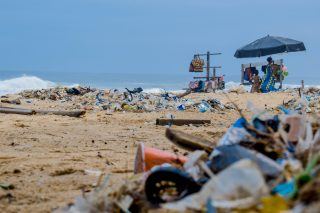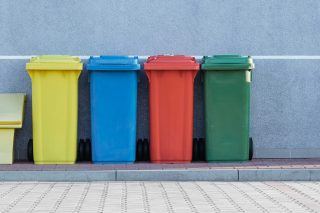All of us have been guilty of choosing skincare, makeup, or even fashion or food items based almost entirely on the packaging. Packaging is a vital part of the marketing strategy for any business. However, the pandemic shook us all up and drove consumers to make decisions on what it is they actually want from the businesses they purchase from. And it seems that the longevity of planet earth is now at the top of our list. The days of single-use products and packaging are numbered and soon it seems that consumers will simply move away from brands that don’t react appropriately and move with us. Single-use plastic needs to be, at the very least, reduced. So, how can we do this and what does it require from us?
Why is packaging so important anyway?

Photo by Suzy Hazelwood from Pexels
The packaging itself has a wide range of benefits. Of course, one of the main benefits of good packaging is its ability to keep the product safe during transport. No business wants to suffer unnecessary loss simply because the consumer is receiving broken or damaged goods. Other than its practical purposes, packing is also a vital marketing tool.
Typically, the packaging contains the brand name and logo. It can also be used as a helpful tool when it comes to grabbing the consumers’ interest. Good quality packaging can be a make-or-break part of consumer decision-making. Think about it, we do often go for the prettier label, the best-looking book rather than making decisions based on how good the product is.
A major re-think
It seems that ‘the new normal’ courtesy of Covid-19 has somewhat accelerated positive change, at least in some places. It has, seemingly, given companies, both small and large, the push they need in order to make significant changes to an aging business model.

Photo by Sarah Chai from Pexels
This is a model in which single-use plastics and non-reusable packaging were king. However, Covid-19 came around and, in some cases, completely broke down supply chains. This forced the hands of corporations, and they began to think, quite literally ‘outside the box’.
Consumers, for their part, were more shaken than many would like to admit by the pandemic and its associated anxieties. This has led to us really honing in on what it is we really want from companies. As it turns out, the 2021 consumer wants the companies they support to be sustainable, eco-friendly, eco-conscious, and ethical. This turnaround in thinking from consumers doesn’t come completely out of the blue. In fact, it’s been coming for quite some time, even if many businesses have been putting off actually dealing with it.

Photo by Lucien Wanda from Pexels
Less plastic is fantastic
Plastic isn’t biodegradable, and that is what makes it so damaging to the environment. Unfortunately, the majority of plastic waste is sent straight to landfills. Because it isn’t a natural material, it cannot break down easily. Ultimately, if and when it does manage to break down, it is extremely toxic to the surrounding ecosystems. Out of all the plastic produced, only a meager 9% is recycled properly. If it doesn’t end up in landfills, plastic often ends up in the ocean where it is consumed by marine animals.
This is not only an issue for the animals themselves as it often causes death. Animals we eat, like fish, often consume microplastics, which ultimately means that plastic is also being consumed by humans. Of all the polluters, plastic packaging is one of the biggest generators of plastic waste. Mostly, plastic packaging that is sent to landfills, because there is so much of it, often ends up being burned. When burned, plastic emits toxic chemicals and pollutants. These are not only bad for the environment but also very bad for us.
Say goodbye to single-use
Single-use plastic is one of the biggest waste creators. Often, as humans, we fail to think about the sheer amount of plastic we use in just a single day. However, a lot of what we consume comes in plastic containers. If you think about it, many of your foods will come in plastic packaging. Another industry guilty of single-use plastic is the beauty and skincare industry. If you take a quick glance at your bathroom, you’ll likely see plastic bottles everywhere. Shampoo, conditioner, body wash, bubble bath (bath foam), and creams all usually come in plastic containers.

Photo by Pawel Czerwinski on Unsplash
Currently, there is a lot of debate over whether single-use plastics should be banned completely. The UN declared a ‘war on plastics’ in 2017. Since then, there has been a move towards banning plastic bags and straws, but even this has raised some issues. Some people argue that single-use plastic needn’t be entirely banned. Others want single-use plastic to be recyclable or be made out of recycled plastics.
Another suggestion has been introducing laws against throwing plastic waste in the general waste in order to prevent it from going to landfills. However, there are lots of issues here. One of the major ones is that not all plastic can be recycled. Another is the issue of finding recycling companies. Though many western countries offer recycling as part of the waste removal system, there are still countries that don’t. This relies on the consumer to make the effort and of course, there’s the associated cost.
In light of these changes, businesses must not only reconsider their packaging materials but also how they communicate their sustainability efforts to consumers. A critical part of this communication lies in leveraging effective digital marketing strategies for environmentally conscious brands, ensuring that their message about sustainability and ethical practices reaches the right audience. This approach not only helps in aligning with consumer values but also in building a loyal customer base that prioritizes environmental consciousness. In today’s digital age, the way a brand presents its commitment to sustainability online can significantly influence consumer perception and decision-making.
Making more sustainable choices
What we really need to do is to focus on changing our mindsets as consumers. We need to rid ourselves of that throwaway culture. Instead of immediately disposing of plastic waste, we should consider whether there is potentially a new use for it. Perhaps you could use that plastic tub from your cream as storage for something else. It really relies on us to change our mindsets and to make that change.

Photo by Liza Summer from Pexels
We also need to consider what we’re buying. It sounds obvious, but take reusable bags with you instead of buying plastic bags. Also, we should consider whether the product we are buying is contained in plastic and then whether that plastic is recyclable. If we can stop buying products contained in plastic packaging, we as consumers can reduce demand and show companies that we want this change. Ultimately, this is on our shoulders, and it is up to us to change.
Main Panel Photograph: Photo by The Humble Co. on Unsplash
References
https://www.lionmarketing.co.za/the-importance-of-good-packaging/
https://www.noissue.co/blog/sustainable-packaging-keeping-it-green
https://supplychain.edf.org/resources/sustainability-101-packaging-waste-the-problem/



![women [longevity live]](https://longevitylive.com/wp-content/uploads/2020/01/photo-of-women-walking-down-the-street-1116984-100x100.jpg)










